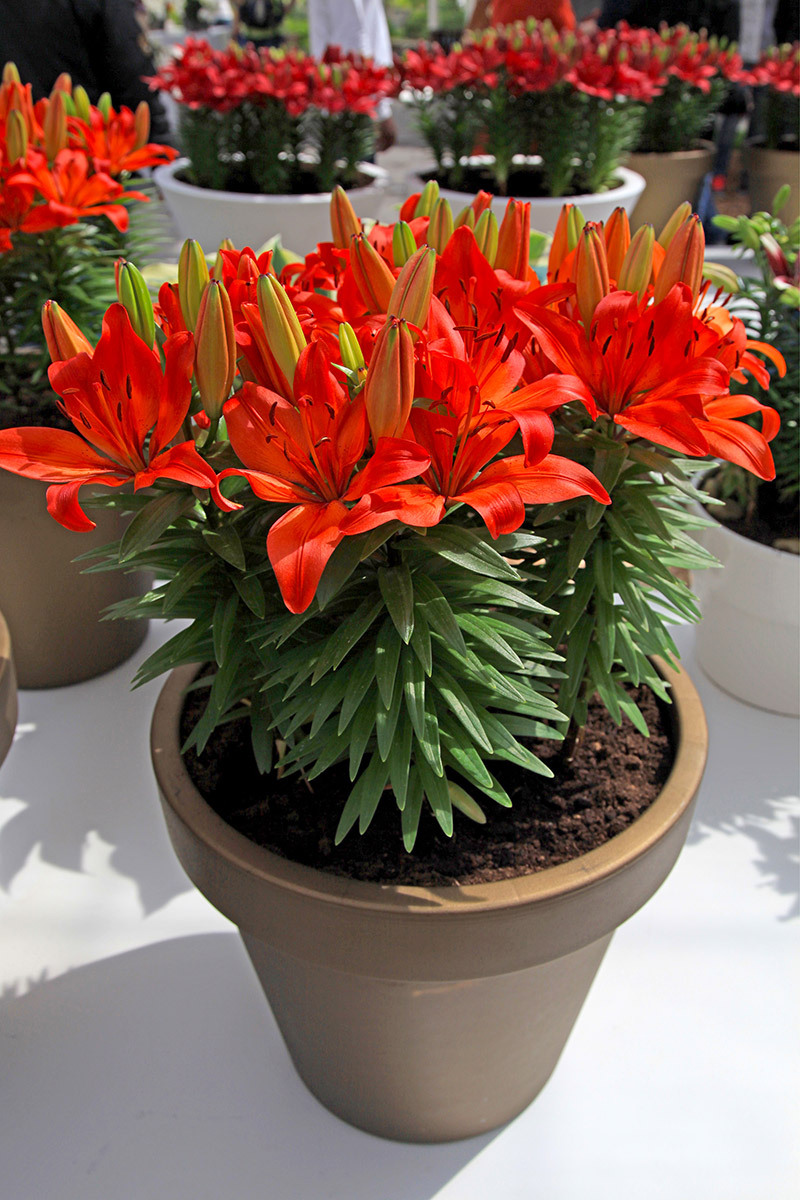The Fascinating Symbolism and Colour Secret of Peony Flowers
Posted on 26/08/2025
The Fascinating Symbolism and Colour Secret of Peony Flowers
Peony flowers, with their opulent layers of petals and captivating scent, have been cherished for centuries across various cultures. The symbolism and colouring secrets of peony flowers reveal layers of meaning that go beyond their breathtaking visual beauty. Whether gracing wedding bouquets or inspiring traditional art, these blooms carry intriguing significance and hidden stories. In this comprehensive guide, delve into the alluring world of peony symbolism and discover the fascinating secrets behind their beautiful hues.

Peony Flowers: An Overview
The peony is a perennial flowering plant belonging to the Paeoniaceae family and native to Asia, Europe, and Western North America. Recognized for their lush, full blossoms and delicate fragrance, peonies have become highly sought-after ornamental plants in gardens and bouquets alike. With a blooming season that spans from late spring to early summer, the peony is revered for both its visual appeal and symbolic depth.
Key Facts about Peony Flowers
- Scientific Name: Paeonia
- Common Varieties: Herbaceous peonies, tree peonies, and intersectional (Itoh) peonies
- Flowering Season: Late spring to early summer
- Origin: Asia, Europe, and Western North America
- Colours: Ranging from white, pink, red, yellow, and even striking purples
The Symbolism of Peony Flowers Across Cultures
Throughout history, peonies have been steeped in symbolism, carrying multiple meanings depending on context and culture. Their lush, rounded blooms and rich fragrances have led to associations with prosperity, love, honor, and even mystery. Let’s explore how different societies perceive these enchanting flowers.
Peony Symbolism in Eastern Cultures
China: Peonies are deeply entrenched in Chinese culture and are often referred to as the “King of Flowers”. They symbolize wealth, good fortune, and nobility. In traditional Chinese art and poetry, they represent feminine beauty and high social status. The tree peony (Paeonia suffruticosa) is particularly venerated and often linked to royalty and honor. Ancient Chinese dynasties even used peony images in royal crests and as emblems for imperial families.
Japan: In Japan, peonies are celebrated for their elegance and are associated with good luck, bravery, and spiritual protection. Japanese artwork frequently depicts peonies alongside lions or dragons, amplifying their symbolism of strength and courage.
Peony Symbolism in Western Cultures
In the Western world, peonies are often connected to romance, compassion, and bashfulness. According to Greek mythology, the peony gets its name from Paeon, a physician to the gods, symbolizing healing and protection. Over centuries, peonies have become popular choices for wedding arrangements and are sometimes called the “marriage flower” due to their association with a happy union and a prosperous future.
- Victorian Era: Peonies came to embody bashfulness and shyness. Presenting peonies was a way to communicate bashful emotions or to ask for forgiveness.
- Modern Symbolism: Today, they are universally regarded as emblems of wealth, honor, romance, and beauty.
The Colour Secret of Peony Flowers
One of the most intriguing aspects of peonies is the diverse spectrum of colours they exhibit, each possessing its own symbolic resonance and secret meaning. These shades range from the purest whites to the deepest reds, and even vibrant yellows and purples. The color of a peony can dramatically alter its symbolism, making it an even more fascinating flower for gardens, bouquets, and cultural ceremonies.
White Peonies
Symbolism: White peonies stand for purity, innocence, and honesty. In many cultures, they are used during weddings to symbolize the start of a new life filled with purity and joy. They are also common in arrangements meant to express your best intentions or to ask for forgiveness.
Pink Peonies
Symbolism: Pink peonies are perhaps the most popular and versatile. Traditionally, they symbolize romance, prosperity, and good fortune. They are often chosen for bridal bouquets, celebrating a happy and rich married life ahead. Darker pink shades also evoke feelings of feminine elegance and beauty.
Red Peonies
Symbolism: A bold colour, red peonies convey love, passion, and honor. In China, these blooms are associated with prosperity and are displayed at events such as Chinese New Year or weddings to attract good luck and success. Red peonies are regarded as the perfect gift to express deep respect and admiration.
Yellow Peonies
Symbolism: Yellow peonies are rarer but are treasured for their cheerful hue. They embody new beginnings, happiness, and hope. In some cultures, yellow flowers also suggest wealth or royalty, making yellow peonies a symbol of abundant fortune and bright possibilities.
Purple and Coral Peonies
Purple peonies are associated with mystery, mysticism, and nobility, while coral peonies, a more recent horticultural development, symbolize energy, passion, and transformation. These varieties add a unique flair to gardens and arrangements, standing for creativity and rare beauty.
The Hidden Language of Peony Flowers
The colour secret of peony flowers ties directly into the concept of floriography – the 'language of flowers' that was especially popular in the Victorian era. Known as a subtle way to convey feelings, the choice of a specific peony colour sent a clear message to the recipient:
- White peonies: "I am sorry," or "Let’s start anew"
- Pink peonies: "I wish you romance and prosperity"
- Red peonies: "My respect and passion is deep"
- Yellow peonies: "A bright future awaits you"
- Purple peonies: "You are rare and noble"
Understanding these colour secrets can help you select the perfect peony for any occasion!
Peonies in Art, Literature, and Mythology
The fascination with peony symbolism and colour has inspired centuries of artistic and literary works. In Chinese history, peonies are celebrated in poetry and fashion, often representing unmatched beauty or moral virtue. Japanese tattoo art incorporates peonies to signify both elegance and strength; they often appear alongside fierce animals for balance.
Greek mythology credits the physician Paeon, who was transformed into a peony flower by the gods, linking peonies with healing properties. Artists through the ages, such as the French Impressionists, depicted peonies in vibrant oil paintings to symbolize abundance and passion.
Peonies in Wedding Traditions
Peonies are classic choices for wedding bouquets, centerpieces, and decor due to their symbolism of everlasting love and prosperity. Their varied hues fit every wedding palette, from pure whites for traditional elegance to pinks and reds for a burst of romantic color. Gifting a peony bouquet at a wedding or anniversary carries the unspoken wish for a joyous and prosperous marriage.
The Care and Cultivation of Peony Flowers
Understanding the symbolism and colour secret of peony flowers is even more rewarding when you can successfully grow these blooms in your own garden. Here are some tips for cultivating healthy and vibrant peonies:
- Site Selection: Peonies thrive in sunny spots with well-drained soil. Choose an area with at least 6 hours of sun daily.
- Planting Depth: For herbaceous peonies, make sure the eyes (buds) are only 1-2 inches below the soil surface. Planting too deeply may reduce blooming.
- Watering: Consistent moisture is crucial during the growing season, especially when buds are forming.
- Support: Large peony blooms can be heavy! Consider using stakes or hoops to keep flowers upright.
- Patience: Peonies may take a year or more to become established. Once settled, they reward you with lavish blooms for decades.
Minimizing disturbance is key: Peonies dislike being moved, so choose their spot wisely!
Fun Facts: The Little-Known Secrets of Peony Flowers
- Longevity: Some peony plants have been known to live for over 100 years!
- Medicinal Use: In traditional Chinese medicine, peony root is used for various health remedies, including pain relief and blood circulation.
- National Flower: The peony is the state flower of Indiana and was designated the national flower of China in 1903.
- Ants and Peonies: Ants are commonly seen on peony buds. They are attracted by the sweet nectar and help keep pests at bay, but are not required for the blooms to open.

Choosing the Perfect Peony for Your Needs
With their deep symbolism and splendid colour palette, peonies can be tailored to suit any occasion. Here’s a breakdown of how to choose the right peony variety and colour for your purpose:
- Weddings: White and pink peonies for purity, romance, and a blissful future.
- Birthday: Yellow peonies for wishing someone happiness and a bright new year.
- New Home: Coral or pink peonies to offer joy, luck, and new beginnings.
- Anniversary: Red or purple peonies to express enduring passion and admiration.
Personalize your gift or garden by combining these peony blooms with other flowers that reinforce your message – such as roses for love, lilies for purity, or lavender for tranquility.
Conclusion: The Enduring Allure of Peony Flowers
The fascination with peony symbolism and colour secrets endures because of the flower’s rich history, diverse meanings, and visual splendor. Whether conveying love, prosperity, honor, or hope, peonies enchant with their lush petals and vivid shades. Understanding the secret language of peonies can deepen your appreciation for these beautiful blooms and help you make meaningful choices for your garden, gifts, or special occasions.
Next time you encounter a peony – whether in a bouquet or a garden – take a moment to admire not only its exquisite beauty, but also the centuries of symbolism and colour secrets it holds within.
Latest Posts
The Fascinating Symbolism and Colour Secret of Peony Flowers
Find Out Which 12 Flowers Bloom Beyond Ordinary Limits
A Gardener's Blueprint to Hydrangea Care





